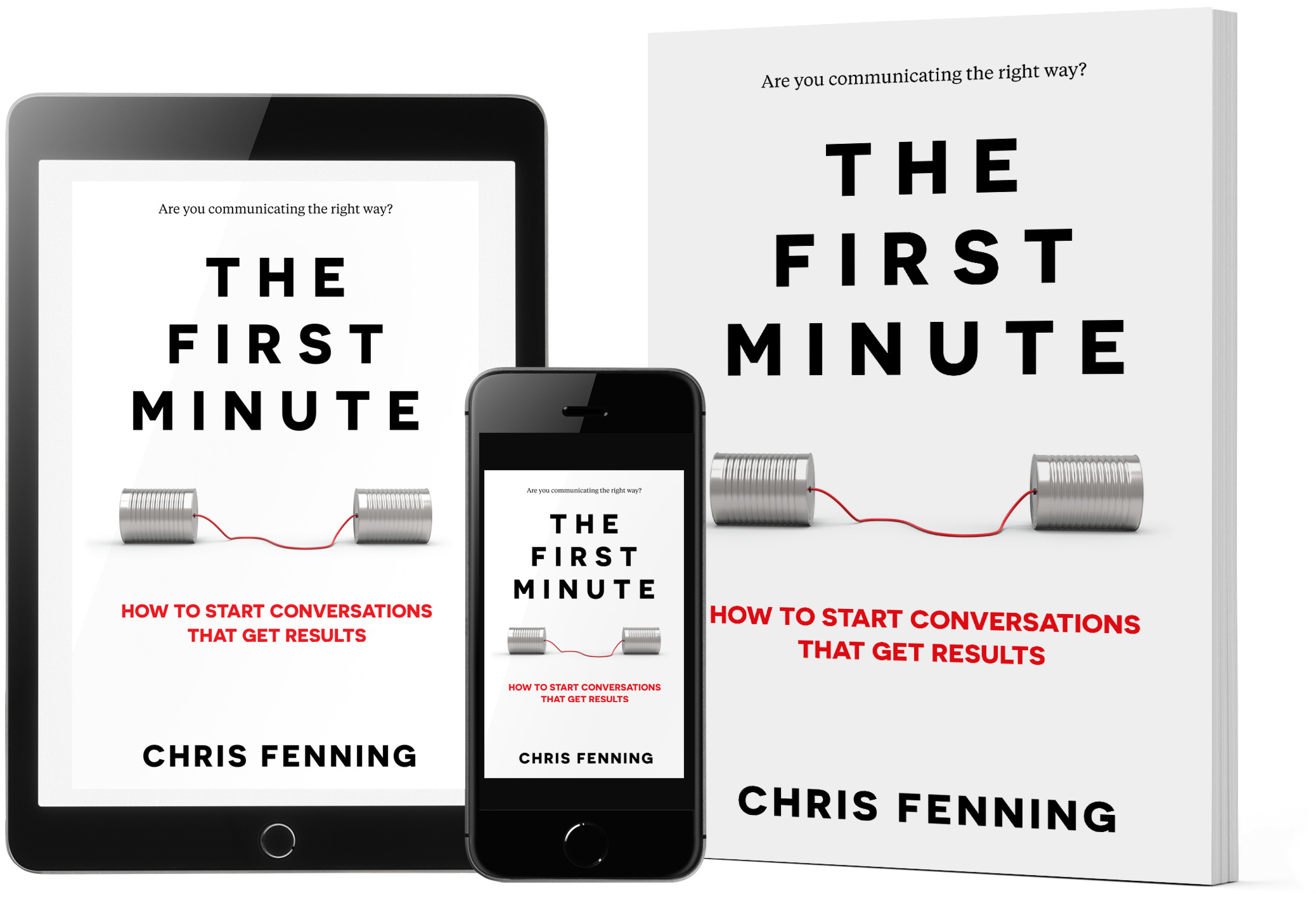Making sure your topic is clear when starting a conversation sounds obvious, but you’d be surprised how often it doesn’t happen. Has anyone ever interrupted you to ask ‘I’m sorry, but what does this relate to?’.
This question, or one like it, usually happens a few minutes into a conversation when the person you are talking to still don’t know what the topic is about. The frustration at having to start again can leave you wondering if the other person was paying attention.
It is easy to think the fault lies with the audience, they should have been paying better attention, right? Wrong.
The person who starts the conversation is the one responsible for making the topic clear when starting a conversation
You know your topic but your audience doesn’t
When you start talking or writing an email, you already know the context of the topic. It’s in your head and you’ve probably been thinking about it for a while. Unfortunately, your audience doesn’t have the benefit of that knowledge. They almost certainly have other things on their minds, such as other work, budget issues, what to have for lunch, a problem at home, and so on. Whatever they are thinking about, it is unlikely to be the thing you want to talk about.
Before you start talking about the details of your message, it is important to provide some context. Make sure to orient your audience, so you are starting at the same point.
This is easy to do if you start your message with a simple context-based statement.
- Name the project or the issue.
- Name the process, system, or tool you will talk about.
- Give the name of the customer with whom you are working.
- Name the task or objective you want to talk about.
The options are endless. The key is to give the context quickly, so your audience knows the topic or area you are going to talk about.
Without context, the audience is not on the same page as you. Because of this, they will be distracted trying to work out what the topic of the discussion is.
Starting a conversation with a clear context focuses your audience on the topic you want to talk about and helps filter out the other things that are in their heads.
Are there situations where context isn’t needed at the start of a work conversation?
No. Context is always needed when starting a new conversation at work.
There are a few scenarios where it appears that context isn’t needed, but appearances are deceptive. For example, if you are talking to a team member about a project on which you have collaborated closely for weeks, it may seem like you don’t need to provide the project name as the context for the conversation. Even in this case, at the moment you want to talk to your colleague about the project, he or she could have any number of other things in his or her head.
Even if your colleague is thinking about the project, the chance he or she is thinking about the specific topic you want to talk about is tiny. In the unlikely event that your colleague is thinking about the same topic as you, you won’t lose anything by providing context.
Never assume the other person knows what you are talking about.
It only takes a few seconds to make the topic clear
It only takes a few seconds to provide context, and that will avoid a lot of confusion. In fact, you will gain positive engagement by confirming you both want to talk about the same thing.
Here are some examples of contexts that you may need to provide in everyday work situations.
- ‘I’m working on project A…’
- ‘I was reviewing the new information security policy…’
- ‘We’re closing the sale on the Jefferson account…’
- ‘I’m about to submit a request for time off…’
- ‘I read the marketing report you sent me…’
- ‘The office supplies have arrived…’
- ‘The new budget came out…’
- ‘I want to reward my team…’
- ‘I’m planning the office party…’
- ‘We’re reviewing the policy for X…’
- ‘My car broke down…’
- ‘The kitchen sink is leaking…’
These lines are short, clear, and each one takes less than five seconds to say.
The options for how to make your topic clear are as varied as the number of jobs and situations that exist in the world. Despite this variety, only one thing is required when providing context: make it clear what you want to talk about.
Think about your own conversations. Do you provide clear context? What would you change to make the context clearer?
Content from: The First Minute — How to Start Conversations That Get Results.
Learn more with my book
The First Minute

My multiple award-winning book is a step-by-step guide for clear, concise communication in everyday work conversations.
Being concise is not about trying to condense all the information into 60 seconds. It’s about having clear intent, talking about one topic at a time, and focusing on solutions instead of dwelling on problems.
Throughout this book you’ll discover how to:
- Have shorter, better work conversations and meetings
- Get to the point faster without rambling or going off on tangents
- Lead your audience toward the solution you need
- Apply one technique to almost every discussion, email, presentation and interview with great results
